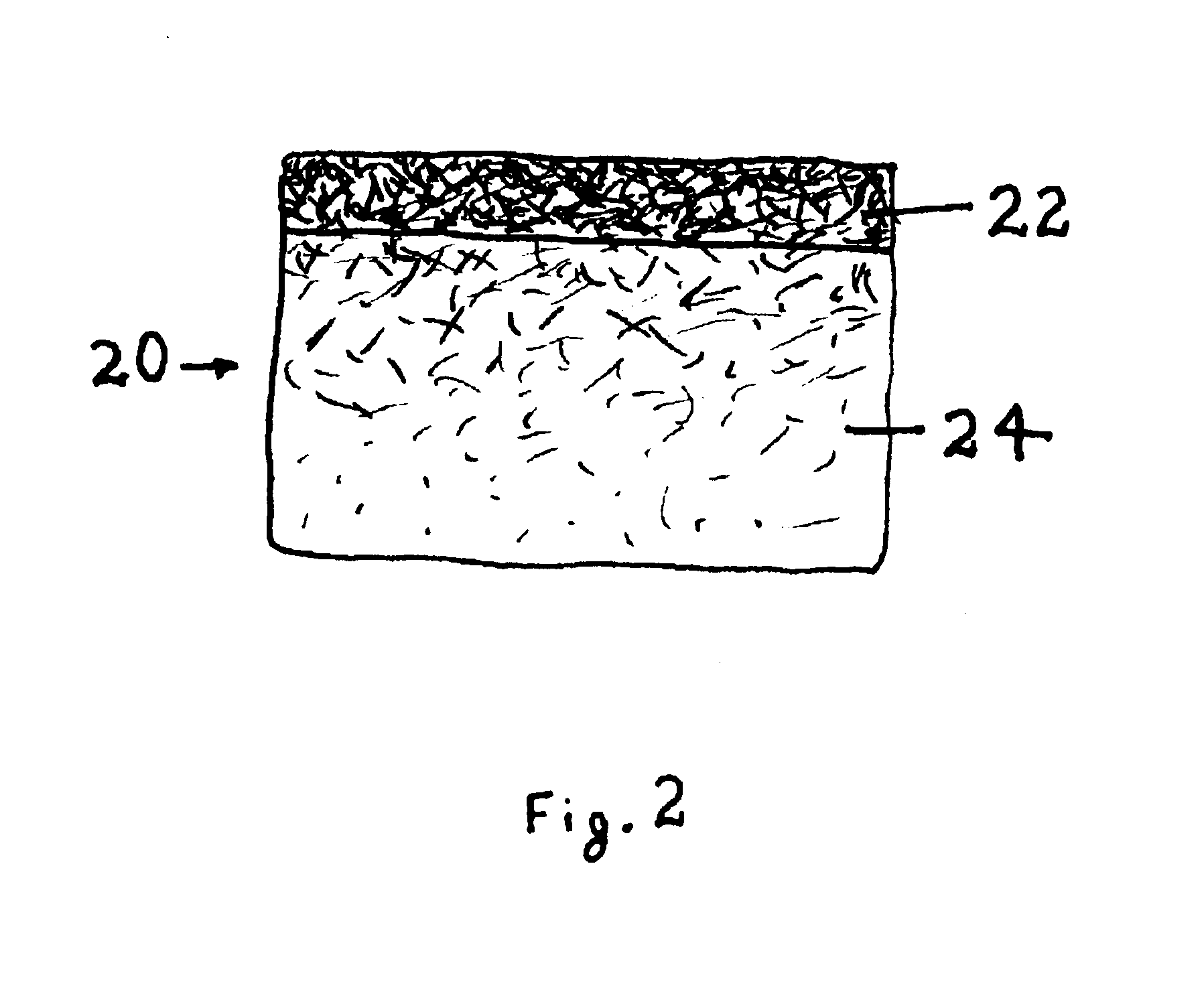Construction materials containing surface modified fibers
a construction material and fiber technology, applied in the direction of water-setting substance layered product, solid waste management, packaging, etc., can solve the problems of poor tensile strength, inability to solve some of the needed improvements, and increased cost and brittleness
- Summary
- Abstract
- Description
- Claims
- Application Information
AI Technical Summary
Benefits of technology
Problems solved by technology
Method used
Image
Examples
examples
[0081]The following examples are intended merely as examples, and the invention is not to be limited thereby.
[0082]Quarternization of Poly(vinylpyridine). An amount of 6 g of poly(4-vinylpyridine) MW 160,000 was dissolved in 80 g of nitromethane. The temperature of the solution was brought to 96° C. An amount of 10 g of hexyl bromide was added dropwise to the solution which was then left to stir for 4 hr. During the mixing, the color of the yellow solution became darker. After 4 hr, the solution was precipitated in 400 mL of toluene. The fibrous solid was filtered and washed with 100 mL of acetone. The quaternized polymer was dried in an oven at 180° C. for 30 minutes.
[0083]Use of Quarternized Poly(vinylpuridine). An amount of 100 parts of β-calcium sulfate hemihydrate was mixed with 0.5 parts of quaternized poly(vinylpyridine), 0.13 parts accelerator and 0.2 parts of dispersant. The mixture was then added to 150 parts of water containing a small percentage of retarder and blended a...
PUM
| Property | Measurement | Unit |
|---|---|---|
| Fraction | aaaaa | aaaaa |
| Fraction | aaaaa | aaaaa |
| Fraction | aaaaa | aaaaa |
Abstract
Description
Claims
Application Information
 Login to View More
Login to View More - R&D
- Intellectual Property
- Life Sciences
- Materials
- Tech Scout
- Unparalleled Data Quality
- Higher Quality Content
- 60% Fewer Hallucinations
Browse by: Latest US Patents, China's latest patents, Technical Efficacy Thesaurus, Application Domain, Technology Topic, Popular Technical Reports.
© 2025 PatSnap. All rights reserved.Legal|Privacy policy|Modern Slavery Act Transparency Statement|Sitemap|About US| Contact US: help@patsnap.com



